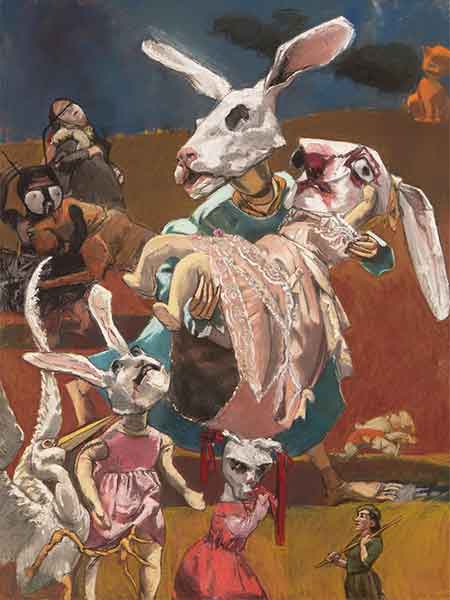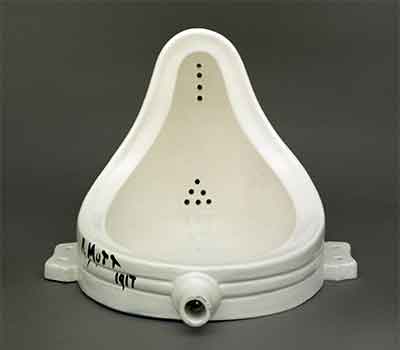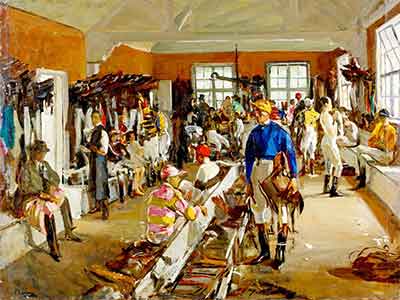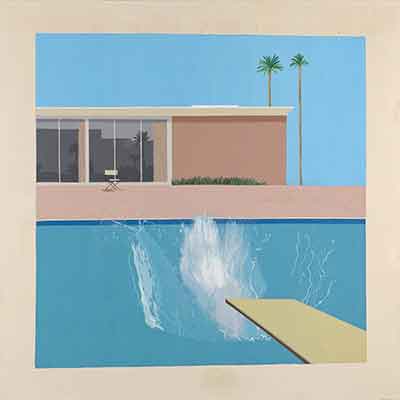Tate Modern
Your Essential Visitor's Guide to London’s Modern Art Museum
Tate Modern, London’s premier destination for modern and contemporary art.
Whether you’re a seasoned art enthusiast or a first-time visitor, this guide is your go-to resource for unlocking the wonders of Tate Modern.
From navigating the gallery’s iconic collections to practical tips for an unforgettable experience, let us be your companion on this cultural journey.
Essential Visitor Information for Victoria and Albert Museum
Tube / Metro
Address: Tate Modern, Bankside, London SE1 9TG
Nearest Stations: Southwark (Jubilee line), Blackfriars (District and Circle lines) and St Paul’s (Central line) are all a short walk away. Zone 1.
Opening Times
- Open every day between 10am and 6pm.
- Last entry 5:30pm, galleries start closing 5:50pm
- Closed on Good Friday and 24-26 December.
It’s always a good idea to check the website for any changes and the opening times for special events.
Tickets & Prices
Tate Modern is free to visit although some special exhibitions or events may have separate admission fees.
Time Needed to Visit
Allocate at least 3-4 hours but you can easily spend the whole day in the museum.
Accessibility
Tate Modern is committed to ensuring all visitors can enjoy their experience, catering for accessibility needs.
Good to Know
It’s worth noting that Tate Modern is part of the wider Tate family, which includes Tate Britain, Tate Liverpool, and Tate St Ives. Each location offers unique collections and exhibitions, providing visitors with a diverse cultural experience.
Family Friendly
Is Tate Modern Family Friendly?
Tate Modern offers a range of family-friendly activities and facilities:
- Family trails and activity packs are available to engage young visitors with the artworks.
- Baby changing facilities are provided, and buggies are allowed throughout the gallery.
- Family-friendly dining options are available at the Tate Modern Café.
Why Visit Tate Modern? Discover 8 Compelling Reasons!
- World-Class Art: Experience masterpieces from renowned artists like Picasso, Warhol, and Hockney, as well as emerging talents pushing the boundaries of contemporary art.
- Iconic Architecture: Marvel at the stunning architecture of the former Bankside Power Station, transformed into a modern art gallery with its striking industrial design.
- Diverse Exhibitions: Explore a dynamic range of exhibitions, from retrospectives of celebrated artists to thought-provoking installations tackling pressing social issues.
- Cultural Hub: Immerse yourself in London’s vibrant art scene and engage with a diverse community of artists, curators, and fellow visitors from around the world.
- Interactive Experiences: Participate in workshops, talks, and guided tours designed to enhance your understanding and appreciation of modern and contemporary art.
- Scenic Riverside Location: Enjoy breathtaking views of the River Thames and iconic landmarks like St. Paul’s Cathedral and the Millennium Bridge while strolling along the South Bank to reach Tate Modern.
- Accessibility: With free admission and a range of facilities catering to all visitors, Tate Modern strives to make art accessible to everyone, regardless of age, background, or ability.
- Inspiration and Reflection: Whether you seek inspiration, contemplation, or simply a new perspective, Tate Modern offers a sanctuary for artistic exploration and personal growth.
Tips for Contemporary Art Beginners

War’, Paula Rego, 2003 | Tate
Copyright: © Paula Rego / Photo © Tate 2003
- Keep an Open Mind: Approach contemporary art with curiosity and an open mind. Remember that art is subjective, and there are no right or wrong interpretations.
- Ask Questions: Don’t hesitate to ask questions about the artwork. What materials were used? What is the artist trying to convey? Understanding the context can deepen your appreciation.
- Research Artists and Movements: Take some time to research contemporary artists and art movements. This background knowledge can provide valuable insights when viewing artwork.
- Attend Guided Tours or Talks: Join guided tours or attend talks led by knowledgeable guides or artists. These sessions can offer valuable insights and help demystify contemporary art.
- Engage with the Art: Take your time to really engage with the artwork. Look closely, consider the composition, and reflect on how it makes you feel.
- Visit with a Friend: Exploring contemporary art with a friend can make the experience more enjoyable. Discussing your thoughts and impressions can lead to new perspectives.
- Be Patient with Yourself: Don’t feel pressured to immediately understand or appreciate every artwork. Give yourself time to develop your own tastes and preferences.
- Experiment and Explore: Don’t be afraid to experiment with different approaches to viewing art. Visit galleries, attend exhibitions, and explore various art forms to broaden your understanding.
- Trust Your Instincts: Remember that your personal response to art is valid. Trust your instincts and embrace your own unique perspective.
- Have Fun: Above all, have fun! Viewing contemporary art should be an enriching and enjoyable experience. Don’t take it too seriously and allow yourself to be inspired and surprised.
Tate Modern's Diverse Art Collections

Marcel Duchamp – Fountain
Display at Tate Modern | Tate
Copyright: © Succession Marcel Duchamp/ADAGP, Paris and DACS, London 2017 / Photo © Tate
A Journey Through Artistic Movements and Innovation
Explore some of the Tate Modern’s diverse collections, ranging from impressionism to contemporary photography, each offering a unique perspective on the evolution of art and artistic innovation.
- The Impressionist Collection: Late 19th century (1870s-1880s)
- The Post-Impressionist Collection: Late 19th to early 20th century (1880s-early 1900s)
- The Cubist Collection: Early 20th century (1900s-1910s)
- The Sir John Lavery Collection: Early 20th century (1900s-1920s)
- The Surrealist Collection: Early to mid-20th century (1920s-1940s)
- The Abstract Expressionist Collection: Mid-20th century (1940s-1950s)
- The Dada Collection: Early 20th century (1910s-1920s)
- The Pop Art Collection: Mid-20th century (1950s-1960s)
- The Minimalist Collection: Mid-20th century (1960s-1970s)
- The Contemporary Photography Collection: 20th century to present day (1970s-present)
The Impressionist Collection
Late 19th century (1870s-1880s)
The Impressionist movement’s artists include Claude Monet, Edgar Degas, and Pierre-Auguste Renoir, among others synonymous with the style.
Why: Impressionism emerged against academic painting, with artists focusing on capturing fleeting moments and the effects of light.
Significance: This collection is significant for its revolutionary approach to painting, breaking away from traditional techniques and subject matter, and paving the way for modern art movements.
The Post-Impressionist Movement
Late 19th to early 20th century (1880s-early 1900s)
The Post-Impressionist Movement’s artists include Vincent van Gogh, Paul Cézanne, and Georges Seurat, among others.
Why: Post-Impressionist artists continued the exploration of impressionist techniques but with their own unique styles, experimenting with colour, form, and perspective.
Significance: This movement is significant for its diversity and innovation, as Post-Impressionist artists rejected the limitations of impressionism and pushed the boundaries of traditional painting. They paved the way for modern art movements such as fauvism and cubism.
The Cubist Movement
Early 20th century (1900s-1910s)
The Cubist Movement’s artists include pioneers such as Pablo Picasso and Georges Braque.
Why: Cubism emerged in the early 20th century as a revolutionary approach to representation, breaking objects and figures down into geometric shapes and planes.
Significance: This movement is significant for its radical reinterpretation of reality. Cubist artists challenged traditional notions of perspective and representation, opening up new possibilities for artistic expression and laying the groundwork for modern art.
The Sir John Lavery Collection

The Jockeys’ Dressing Room at Ascot,
Sir John Lavery, 1923 | Tate
Copyright: Photo © Tate
Early 20th century (1900s-1920s)
The Sir John Lavery Collection showcases artworks by the prominent Irish painter, offering a glimpse into early 20th-century Britain with a focus on impressionism.
Why: Lavery’s paintings reflect his experiences in France and the influence of impressionist techniques, capturing fleeting moments and the effects of light.
Significance: This collection is significant for its portrayal of British society and culture during the early 20th century. Lavery’s expressive portraits and landscapes provide valuable insights into the artistic trends of the era, offering a unique perspective on the time period.
The Surrealist Movement
Early to mid-20th century (1920s-1940s)
The Surrealist Movement immerses visitors in the imaginative world of surrealist artists such as Salvador Dalí, René Magritte, and Max Ernst.
Why: Surrealism emerged as a reaction to the rationalism of the early 20th century, exploring the realms of dreams and the subconscious.
Significance: This movement is significant for its exploration of the human psyche and the subconscious mind. Surrealist artists challenged traditional artistic conventions and paved the way for new forms of expression and interpretation, leaving a lasting impact on the art world.
The Abstract Expressionist Movement
Mid-20th century (1940s-1950s)
The Abstract Expressionist Movement features bold and expressive works by artists like Jackson Pollock, Willem de Kooning, and Mark Rothko.
Why: Abstract expressionism emerged in the mid-20th century as a response to the tumultuous social and political climate of the time.
Significance: This movement is significant for its revolutionary approach to artistic expression. Abstract expressionist artists embraced spontaneity and emotion, pushing the boundaries of painting and paving the way for future artistic movements, leaving an indelible mark on the art world.
The Dada Movement
Early 20th century (1910s-1920s)
The Dada Movement presents the irreverent and provocative works of artists like Marcel Duchamp, Man Ray, and Hannah Höch.
Why: The Dada movement emerged in Europe during World War I, seeking to subvert traditional artistic conventions and question the role of art in society.
Significance: This movement is significant for its revolutionary spirit and its rejection of traditional artistic values. Dada artists embraced chance, randomness, and absurdity, paving the way for later movements such as surrealism and conceptual art, challenging the very definition of art itself.
The Pop Art Movement

A Bigger Splash’, David Hockney, 1967 | Tate
Copyright: © David Hockney / Photo © Tate
Mid-20th century (1950s-1960s)
The Pop Art Movement invites visitors to explore the vibrant world of pop art, which emerged in the 1950s and 1960s with artists such as Andy Warhol, Roy Lichtenstein, Peter Blake, and Marta Minujín.
Why: Pop artists drew inspiration from popular culture and consumerism, incorporating everyday objects and images into their artwork.
Significance: This movement is significant for its reflection of post-war consumer culture and mass media. Pop artists blurred the lines between high and low art, challenging traditional notions of artistic value and influencing contemporary culture, making art accessible to a wider audience
The Minimalist Movement
Mid-20th century (1960s-1970s)
The Minimalist Movement presents the clean lines and geometric forms of minimalist art, which emerged in the 1960s with artists such as Donald Judd, Sol LeWitt, and Agnes Martin.
Why: Minimalist artists sought to create art that was stripped of unnecessary elements and focused on the purity of form.
Significance: This movement is significant for its exploration of space, form, and materiality. Minimalist artists rejected the emotionalism of previous artistic movements and embraced a more objective approach, laying the groundwork for future developments in conceptual art and influencing the trajectory of modern art.
The Contemporary Photography Movement
Contemporary
The Contemporary Photography Movement showcases the work of photographers from around the world, offering a diverse range of perspectives on modern life.
Why: From documentary photography to experimental techniques, this movement explores contemporary issues and captures the essence of our times.
Significance: This movement is significant for its exploration of contemporary issues and its ability to reflect on social, political, and cultural matters. Through their art, contemporary photographers provide insights into the complexities of the modern world, making the movement a reflection of our time.
Food and Drink at Tate Modern
On-Site Venues
- Corner: Experience a blend of art, food, and drink at this riverside deli café and after-hours bar.
- Restaurant: Enjoy stunning skyline views while dining on a delicious seasonal menu.
- Natalie Bell Building Espresso Bar: Grab a quick refreshment between exhibitions at this convenient espresso bar.
Picnic Option
Visitors can also bring their own picnic to enjoy in the outdoor spaces surrounding Tate Modern.
Nearby Eateries and Pubs
- The Table Café: A short walk away, offering modern British cuisine in a relaxed setting.
- The Blackfriar: Step into history at this traditional pub with Art Nouveau interiors.
- Borough Market: Explore diverse culinary experiences at London’s renowned food market.
Explore Tate Modern's Gift Shop

Image © tate.org.uk
Find unique mementos and artistic souvenirs at Tate Modern’s gift shop. From postcards to prints, the shop offers a variety of items to commemorate your visit.
Memorable Keepsakes:
Discover a curated selection of souvenirs, including art-inspired gifts and exclusive merchandise, perfect for bringing home a piece of Tate Modern’s creativity.
Online Store
Can’t find what you’re looking for? Browse Tate Modern’s online store for a wider selection of gifts and souvenirs, available for purchase from the comfort of your home.
Where is Tate Modern London? How to Get There
By London Underground (Tube / Metro / Subway)
The nearest Tube station is Southwark (Jubilee line), approximately a 7-minute walk from the gallery. You can also reach Tate Modern from Blackfriars (District and Circle lines) and Borough (Northern line) stations. All in Zone 1.
![]()
![]()
![]()
![]()
London Buses
Several bus routes serve Tate Modern, including numbers 45, 63, 100, and RV1. Check Transport for London’s website for specific bus routes and schedules.
Hop-on Hop-off Sightseeing Buses
Many hop-on hop-off sightseeing buses pass through Tate Modern, offering a stop in close proximity.
Car Parking for Those Driving
Limited paid parking is available nearby, but public transportation is recommended due to limited parking spaces in the area.
River Services
You can reach Tate Modern by boat via the River Thames. Tate Modern is conveniently located along the river, making it accessible by various boat services, including river cruises and commuter ferries. Enjoy a scenic journey along the Thames and disembark near the gallery for a unique arrival experience.
Cycling
Bicycle racks are available outside Tate Modern for cyclists. The gallery is easily accessible by bike, with dedicated cycle lanes in the surrounding area.
Walking to the V&A
Tate Modern is conveniently located along the Thames Path, making it accessible by foot from various points along the river. Enjoy a scenic walk to the gallery and take in the sights of London along the way.
You can effortlessly plan your route and estimate timings using TFL’s Journey Planner. This tool considers your starting point and offers detailed directions, ensuring a seamless journey to the museum.
Nearby Attractions
- Shakespeare’s Globe Theatre: Allow approximately 1-2 hours for a guided tour or to catch a performance. Tours start at various times throughout the day, so check the schedule in advance.
- Millennium Bridge: Take a leisurely 20-minute walk across the bridge, enjoying the views. Factor in extra time for photo stops.
- Borough Market: Plan for 1-2 hours to explore the market and enjoy lunch. It’s busiest during lunchtime, so aim to arrive around midday.
- Tate Britain: Allocate at least 2-3 hours to explore the collections. The museum is open until late, so you can visit in the afternoon or early evening.
Making the Most of Your Day:
- Starting Time: Begin your day around 10:00 AM with a visit to Tate Modern.
- Transport: Walk from Tate Modern to Shakespeare’s Globe Theatre (approximately 15 minutes). Afterward, stroll across the Millennium Bridge towards Borough Market (20-minute walk). From Borough Market, take the tube (District or Circle line) to Pimlico Station for Tate Britain (approximately 15 minutes). Alternatively, hop on a bus for a scenic route between attractions.
- Lunch: Enjoy lunch at Borough Market around midday to avoid the crowds.
- Evening Option: If you have extra time, consider exploring Tate Britain in the late afternoon or early evening when it’s less crowded.
Accessibility at Tate Modern
- The main entrance is accessible with ramps and lifts available.
- Steps at the entrance are equipped with handrails.
- Tate Modern is wheelchair accessible throughout its galleries and facilities.
- Wheelchairs are available for loan free of charge, but booking in advance is advisable.
- Large print guides and tactile maps are available upon request.
- Assistance dogs are welcome throughout the gallery.
- Induction loops are installed at information desks and ticket counters.
- British Sign Language (BSL) interpreters are available for select events and tours. Advance booking may be required.
- Quiet spaces are available for visitors who may need a break from sensory stimulation.
- Social stories and sensory guides are provided for visitors with autism spectrum disorders.
There are 12 Blue Badge parking spaces on Exhibition Road where you can park for up to four hours between 8:30am and 6:30pm.
Service animals are welcome at Tate Modern. Please ensure they are appropriately restrained.
Frequently Asked Questions (FAQ) for Visiting Tate Modern London
What are the opening hours of Tate Modern?
Tate Modern is typically open daily from 10:00 AM to 6:00 PM. Find more information in our Essentials section.
Is there an admission fee for Tate Modern?
Admission to Tate Modern’s permanent collections is free for all visitors. However, there may be charges for special exhibitions. Find more information in our Essential Information section.
How long does it take to visit Tate Modern?
On average, visitors spend around 2-3 hours exploring Tate Modern’s collections and exhibitions.
Are there guided tours available at Tate Modern?
Yes, Tate Modern offers guided tours led by knowledgeable guides.
Is Tate Modern accessible for visitors with disabilities?
Yes, Tate Modern is fully accessible for visitors with disabilities. Find more information in our Accessibility section.
Can I take photographs inside Tate Modern?
Is there a gift shop at Tate Modern?
Yes, Tate Modern has a gift shop where you can purchase art books, prints, souvenirs, and unique gifts inspired by the museum’s collections. Find more information in our Gift Shop section.
Are there dining options available at Tate Modern?
Yes, Tate Modern has on-site cafes and restaurants where you can enjoy a meal or refreshments during your visit. Find more information in our “Food and Drink at Tate Modern” section.
How do I get to Tate Modern using public transportation?
Are there nearby attractions to visit after Tate Modern?
Yes, there are several nearby attractions within walking distance of Tate Modern. Find more information in our “Nearby Attractions” section.
